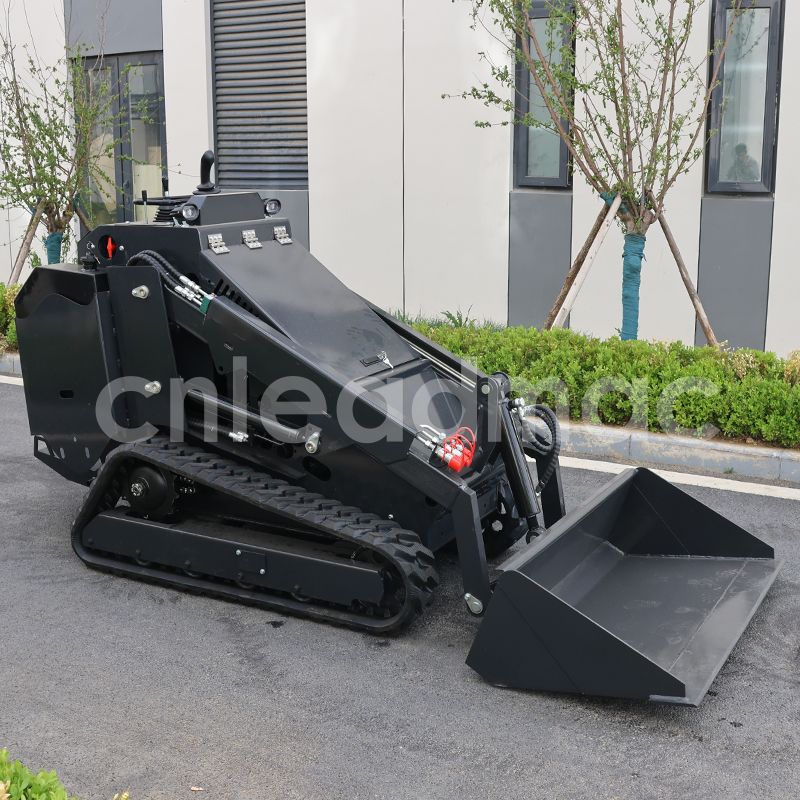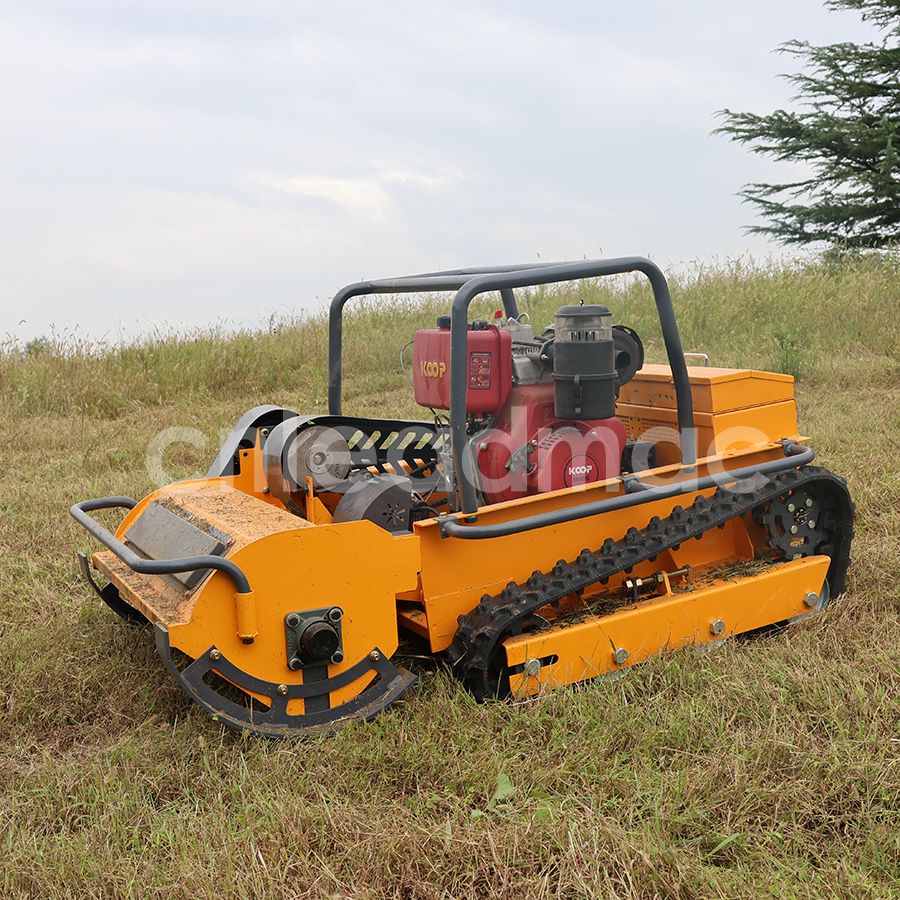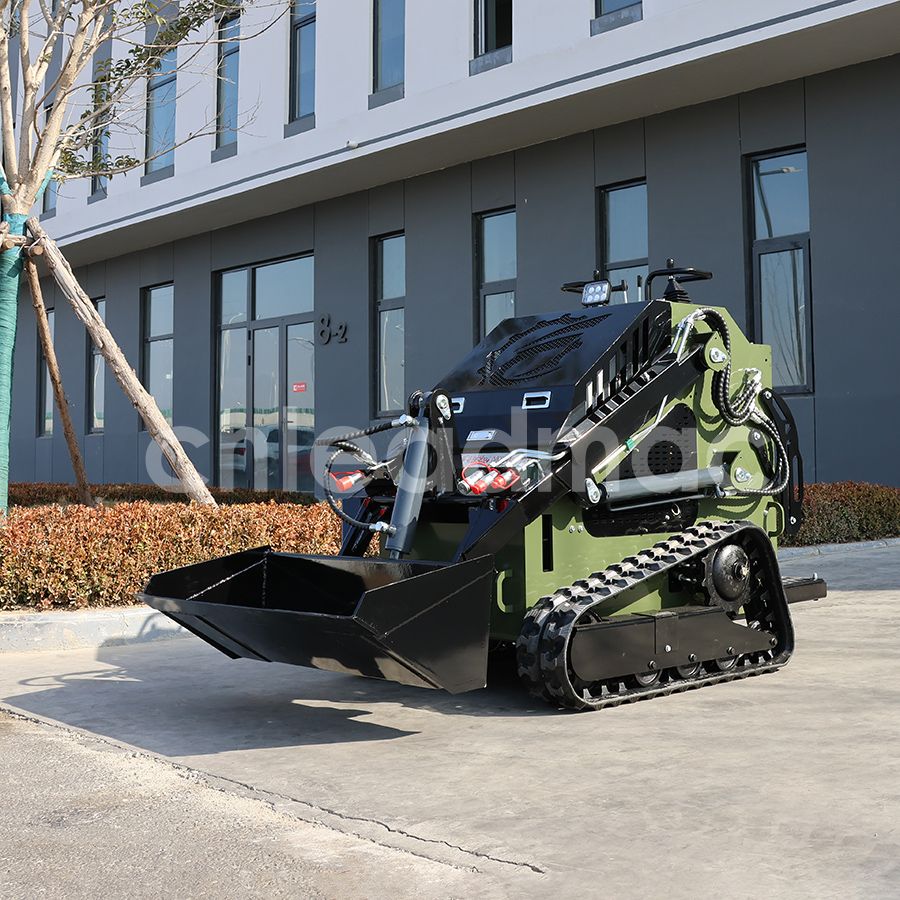In the “underground battle” of construction, hard soil, boulders, and root systems were once insurmountable obstacles: Municipal pipeline laying faced delays due to blasting rock layers; garden soil improvement required three days of manual labor to clear old tree roots; traditional equipment dug “crooked trenches” for agricultural drainage, causing frequent leaks in irrigation systems... The arrival of the trencher attachment equips skid steer loaders with an “Underground Precision Tunneling System” — a triple breakthrough of “hard soil penetration + precise shaping + multi-scenario adaptation” that completely rewrites the efficiency rules of underground construction.
I. Battle Against Hard Soil: The “Dual-Kill Combo” of Torque and Cutter Heads
The fatal flaw of traditional trenchers is their “failure in hard soil”:
Slipping in clay, jamming in gravel, stalling on rock — frequent equipment swaps are needed for complex strata;
Rapid cutter head wear (needing replacement after half a day of hard soil work) drives up maintenance costs.
The trencher’s “underground blade” design achieves “crushing breakthroughs” in hard soil:
High-torque motor direct drive: Output torque increased by 40% compared to traditional equipment, paired with reinforced chains, slicing through hard soil, boulders, and even weathered rock like a “steel saw”;
Tungsten carbide cutter matrix: Staggered carbide cutters (hardness ≥ HRC60) extend service life by 3x in rocky soil, maintaining cutting sharpness while “gnawing on hard bones”;
Li Ming, head of a municipal engineering team, revealed: “Previously, a weathered rock section took 3 days of blasting + cleaning; now the trencher completes it in 8 hours, with only 10% cutter wear!”
II. Precision Shaping: Turning Trenches into “Standardized Products”
The hidden cost of underground construction lies in “uncontrolled trench shapes”:
Uneven depths cause pipeline laying issues;
Collapsed walls and residual soil require time-consuming secondary cleaning;
Width deviations lead to material waste and rework.
The trencher’s “shape-control technology” redefines “underground precision”:
Dual adjustable dimensions: Depth (up to 900mm) and width (150-200mm) are infinitely variable, adapting to pipelines, drainage ditches, etc.;
Standardized soil cleaner: Bolt-fixed soil scrapers continuously remove residue, keeping trench walls smooth and bottoms clean — no more “soil leveling” for pipeline laying;
Chain stabilization system: Precisely designed chain pitch ensures straight trenching with ≤5mm/m deviation, enabling “mass production of standardized trenches”.
III. Multi-Scenario Breakthrough: Penetrating From Municipal to Rural Fields
The trencher’s true ambition is to transform skid steer loaders into “underground engineering platforms”:
Municipal pipeline battles: Rapidly dig “straight deep trenches” before gas, cable, and water pipe laying, replacing the inefficient manual + excavator combo;
Garden soil improvement: Clear old tree stumps and break up compacted layers, creating loose soil for seedling transplantation with 6x efficiency;
Agricultural infrastructure: Dig irrigation/drainage ditches and planting troughs, with precise shaping reducing soil erosion for high-standard farmland;
Emergency rescue: Quickly dig rescue channels and repair trenches after earthquakes or pipe bursts, reclaiming precious rescue time.
The “Precision Tunneling” Era of Underground Construction
As the trencher helps skid steer loaders “conquer hard soil barriers”, underground construction officially enters a new era of “millimeter-level precision + hard soil penetration”. This attachment-driven revolution not only eliminates “underground construction blind spots” but also proves: The future of engineering equipment lies in the breakthrough of “integrated above-ground and underground capabilities” — whoever conquers the “underground battle” will seize full-dimensional control of construction efficiency.
 Should You Choose An Electric
Should You Choose An Electric
 Five Things To Check On Your S
Five Things To Check On Your S
 Revolutionizing Garden Care: T
Revolutionizing Garden Care: T
 Which Skid Steer Loader Is Bes
Which Skid Steer Loader Is Bes